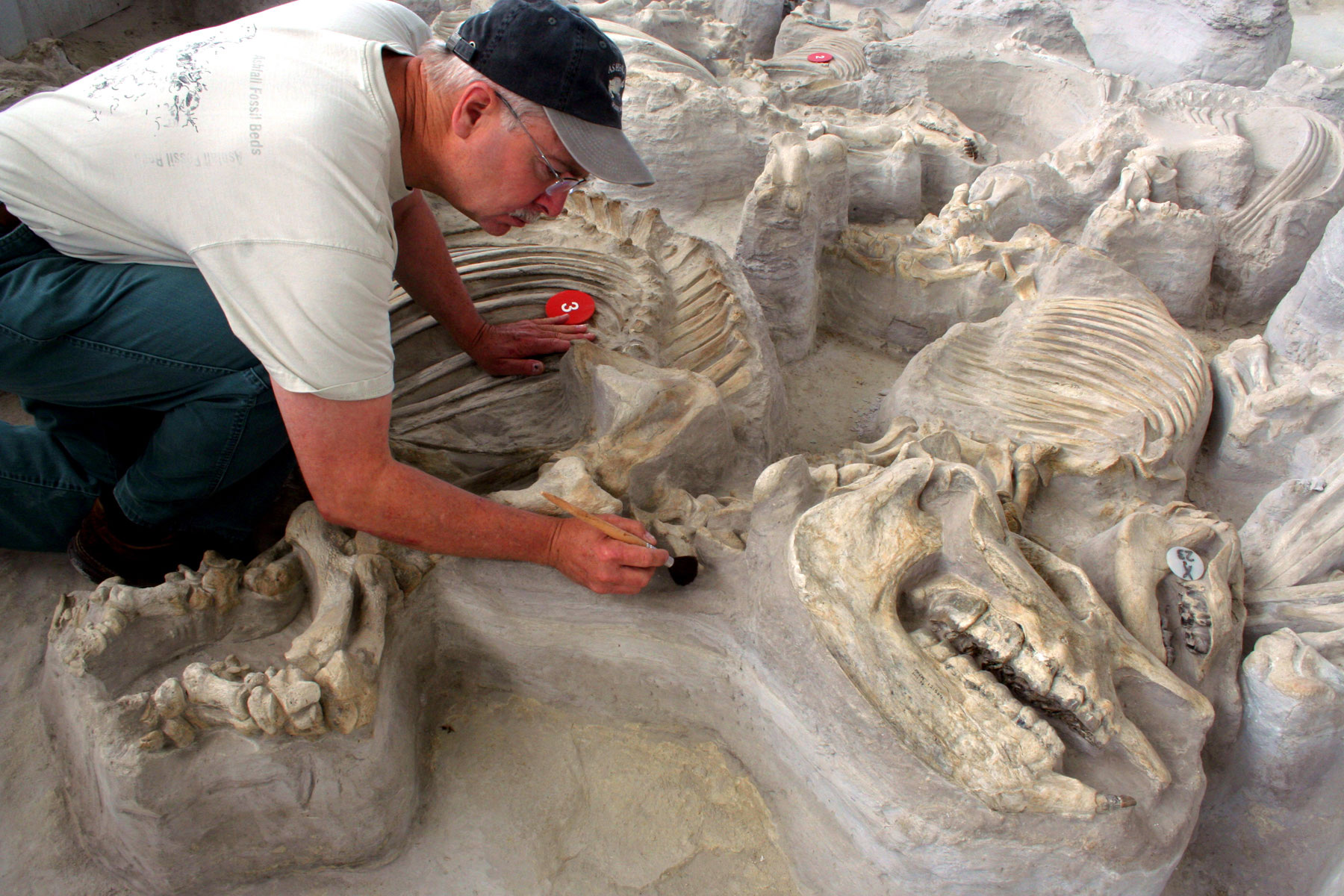The Ashfall deposit preserves the fossilized remains of ancient animals that perished in a dense volcanic ash fall which occurred during the late Miocene, approximately 12 million years ago.
Click below to see how the ash traveled and where it landed.
Twelve million years ago, the water hole at Ashfall was a vibrant, vital ecosystem serving a diverse array of creatures. Meet the animals that lived their lives—and met their fate—at what became one of the world’s great fossil beds.
Ashfall was an ancient water hole, a shallow depression where water would accumulate. The pond was used by many different species. “As far as we can tell, this was probably the only water hole for at least a mile in any direction,” explained paleo sleuth Mike Voorhies. It's likely that herds of animals from a fair distance away came to Ashfall at different times each day.
“Probably herds of zebra-like horses would come in and then maybe a bunch of camels later,” Voorhies said. “It's pretty likely that rhinos spent a fair amount of time actually basking in the waterhole. The fossil rhinos we have here have short legs like a hippo. It's pretty likely that these guys spent a fair amount of time wallowing and thrashing around in the water.”
Voorhies said that when the four-tusker elephants came to the water hole to drink and bathe, it’s probable that most other creatures left, since typically elephants are not very tolerant of other animals.
At night, the meat-eating animals would come to Ashfall to drink—saber cats and hyenas for example. There would be small creatures such as hedgehogs, too.
Though life resumed above the layers of volcanic ash, a remarkable process was underway beneath what eventually became Nebraska farmland.
The combination of quick burial, minerals leached from groundwater, and protection from disruptive forces produced some of the best-preserved fossils ever found.
Instead of one or two examples scattered across the countryside, Ashfall Fossils Beds yielded entire herds of specimens from a remarkable array of species, left in place, in order, and preserved in three-dimensional skeletons.
Thanks to the unusual events that took place 12 million years ago—and thanks to the care with which the site has been excavated—Ashfall offers paleontologists and park visitors a time capsule filled with examples of the animals and plants that lived in and near the water hole, providing a view of their life, climate, and world in amazing detail.
 Retired Chief Preparator Greg Brown at Ashfall Fossil Beds
Retired Chief Preparator Greg Brown at Ashfall Fossil Beds
Explore some of the animals discovered at Ashfall in these high-resolution 3D models:
This is an inquiry activity that will introduce students to the variety of fossils that can be found at Ashfall Fossil Beds State Historical Park located north of Royal, Nebraska. Students will use what they have learned about describing fossils from previous activities to infer information, and identify cardstock representations of fossils to that of the real fossils found at Ashfall through research on the Ashfall website. Students will have four excavation opportunities to investigate and identify the animals at Ashfall. This activity takes 1-2 days to complete. This activity is an adaptation of the Great Fossil Find.